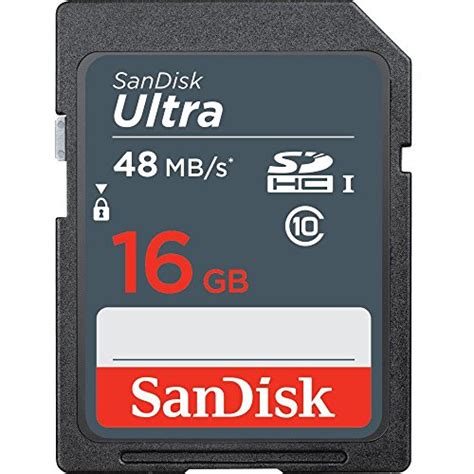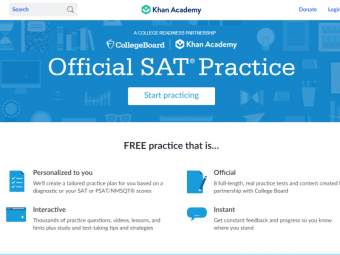
To make your training program worthwhile and effective, you need to adapt your strategies to fit your team of adults. It's crucial for your organization to engage adult learners through effective training means.
One way to accomplish this is by understanding the Adult Learning Theory (ALT).
Understanding the Adult Learning Theory, is a critical part of improving team training so you can make the best use of your resources, increase your return on investment, and empower people to meaningfully learn.
In this guide, we'll define Adult Learning Theory and give you some ideas on how you can incorporate these principles into your learning strategy.
Adult learning theory (ALT), or andragogy, was developed by Malcolm Knowles in 1968 and is the idea or study of how adult learners differ from children. This theory of adult learning focuses on establishing the characteristics of adult learners and exploring how they gain new skills and knowledge.
Ideas like self-directed learning, experiential learning, and collaborative and cooperative learning stem from this theory.
Let's look at some of the core ideas that make up Knowles' Adult Learning Theory.
While Knowles first laid out his theory of adult learning in 1968, he continued to research and adapt his ideas. In 1980, he laid out what he described as his four assumptions about adult learners. He would add a fifth assumption in 1984.
According to Knowles, these five assumptions made up the primary differences between child and adult learners, which would then help to guide educators to adjust their approaches when training adults.
For the most part, children have "dependent personalities," which means that they rely on others to take the lead when it comes to instruction. This dependence is why the classroom approach works in childhood education—an instructor shows children where they should focus their attention.
On the other hand, adults tend to have fully developed concepts of the self. As a result, adults tend to be much more self-directed when learning.
While it is essential to have an expert or trainer to serve as a guide, for the most part, adult learning works best when people are in charge of their training—or at least feel like they are playing an active role in the training process.
Unlike children, who come into the education process as blank slates, adults have an increasing collection of past experiences that they can draw on during the learning process. This collection of knowledge, references, and other experiences gained throughout their lives can be a powerful tool for adult learners.
This foundation allows them to make connections. These internal links people can create in their minds drive Adult Learning Theory. Each new skill or process must fit within its existing internal framework to be deeply understood and applied. Adult learning is the process of figuring out how to fit new bits of information into that current context.
For most of childhood, education instills specific knowledge—like reading, writing, and mathematics—and trains critical thinking skills. The idea is to give students a solid base of knowledge to provide them with the skills they need to succeed later in life.
On the other hand, adult learning focuses typically on learning for a specific reason, like work or personal development.
In essence, adults learn when they want to. This motivation is usually rooted in a desire for advancement. Trainers can leverage this desire for self-improvement by showing that training can directly benefit a person's ability to advance.
Unlike children, whose understanding of time is less anchored to their experience in the world, adults perceive time to be a genuine factor in learning. This time pressure leads adults to seek ways to maximize the value of their experiences in whatever ways they can.
For this reason, Adult Learning Theory suggests that adults prefer training and education that focuses on topics that are immediately applicable to their lives rather than theoretical solutions to abstract issues.
Adult learners are less interested in gaining a deeper understanding of a particular subject and more curious about solving specific problems that are highly relevant to their experience.
This assumption of Adult Learning Theory is perhaps the most significant because it underpins all the other assumptions.
For children, the motivation to learn tends to come from external sources, like teachers, parents, and other adults. While some students do have internal motivation, even these learners are driven, at least in part, to satisfy the expectations of adults.
For adult learners, motivation tends to be more internal. On some level, the authority of a trainer or teacher is less visible than it is in a childhood classroom. Adults have a more fully developed sense of self, and they find themselves driven by their interests.
This internal motivation can take many forms. A desire for self-improvement, for instance, can be a powerful motivator, as can the potential for promotions at work.
Some people even find motivation in defying expectations, especially when told that their goals are unrealistic. Whatever the reason, internal motivation is perhaps the most crucial assumption of Knowles' Adult Learning Theory.
While Knowles' four assumptions are the most frequently cited part of his theory of adult learning, another essential part of his work comes in the form of four principles that should guide trainers. These principles incorporate the lessons learned from his assumptions and help guide instructors to create programs that will be effective for teams.
Whatever the adaptations may include, Adult Learning Theory's core principles provide a solid foundation that you can use to adapt your training and development programs to reach the full potential of your teams.
Adult learners are independent, self-concerned individuals. They often have limits on their time, attention, and energy. When they have to attend training that they don't feel is relevant, trainers face an uphill battle trying to get learners to buy into the program.
The best way to handle this problem is to allow adult learners to help plan their training and provide a means to evaluate their education programs.
Ask your employees which skills are essential to them and incorporate their suggestions into your training program.
As stakeholders in the planning process, adult learners are more likely to take ownership of their education, motivating them to participate fully in the process.
By allowing your employees to have a voice in evaluating their training experience, they won't feel detached from the result of the training.
Since adult learners are motivated less by pleasing an instructor and more by achieving their own goals, adult learners benefit from setting their own goals and playing a role in determining whether they've hit those targets.
Because adult learners have more positive and negative experiences in their past, their training should rely on those experiences.
For adults, good training involves tying existing skills into new knowledge bases and integrating newly learned skills into prior successes and failures. Using this context as a guiding force in developing training programs makes employees more likely to retain the training.
While many adults enjoy "learning for learning's sake," this kind of education is usually relatively informal. Reading books, watching documentaries, and taking courses in subjects that interest them—these hobbies are valuable but are of limited use when it comes to developing training programs.
The challenge for employee training programs is to highlight how each skill will be immediately relevant to the adult learner. Focusing on abstract problems is not only less likely to capture an employee's attention, but it's also more likely that the employee will forget the information before they use it.
Instead, make sure to emphasize the way that every element of your training curriculum is directly applicable, ideally by allowing teams to use their new skills as soon as possible.
By the time most learners are adults, memorizing long lists of information is no longer an effective learning method. You might be able to retain some information that way, but for the most part, adult learners perform better when they can focus on specific problems and how they can better learn to solve them.
Rote memorization doesn't provide long-term benefits for anyone, especially in today's world, where people can quickly access information online.
By focusing on solving problems rather than producing more content, you emphasize the importance of learning processes. When you combine a problem-based approach with an emphasis on relevancy, your training programs will be very effective.
Download your 6-step customizable training manual template.
When it comes to training, most companies recognize that everyone learns a little bit differently. Some people learn better through lectures, while others need a more hands-on environment to grasp a new concept or idea. For many years, training programs have incorporated various training methods for precisely that reason.
While this variety has undoubtedly helped make training more effective, these same programs can remain rooted in the mistaken assumption that adults learn much in the same way they did as children. Once adults are around 25, their brains begin to learn differently.
Here's how to implement the adult learning theory in your corporate training programs:
Take some time to look at your company's current training programs. The first question you should ask yourself is what you're trying to accomplish with your training.
Whether you're looking to build your organization's skill base or build a pipeline for promotion, you should be very clear about your goals.
This means you need to be willing to go into detail about your goals, too. Create training objectives that make sense for your team. The more specific you can be in your assessment, the more valuable your conclusions will be, helping you build a more robust training program.
You can focus your attention on training with the right content and the most suitable way for your employees to retain valuable information.
Your employees will also have goals for what they want out of the training process, and it's essential to consider their needs when you're putting together your training programs.
While you likely have ideas about what is most relevant for your organization's needs, your employees probably have a different perspective. They can give you valuable insight into what would be most beneficial for them.
You should also make sure to have employees provide feedback after training sessions. The feedback will enable you to tailor better your future efforts to maximize value.
This feedback can look like an evaluation form, a post-mortem discussion, or one-on-one interviews. However, no matter what format it takes, make sure that you enter into the process in good faith. Be willing to incorporate the feedback you receive.
Adults are active learners. They tend to work better when they're putting their training to use. If you give them real-world examples—ideally drawn from your company—you encourage them to practice the content and see how it is immediately relevant.
When they involve your company, real-world scenarios can give your training an added level of interest. Employees will recognize familiar names, wording, processes, and more, increasing team members' engagement with the material. You'd be surprised how well people respond to the familiar!
Traditionally, companies organized training into group sessions. You might gather a specific team or collection of people for a day or an afternoon and present a highly structured training program focused on one particular skill or strategy.
While gathering teams together at specific times to participate in training activities still holds value, the growth in eLearning has dramatically increased the options available to companies.
Online university courses, learning management systems, and other services make it easier than ever before for team members to pursue training on their own time—when it works best for them.
And features like gamification, bite-sized learning, and video coaching allow learners to receive totally customized and enriched experiences anytime, anywhere.
Adult learners thrive when they have control over their training. Allowing them to adapt their training to their schedule gives them an unparalleled sense of control.
Even better, many of these online services can be tailored to each individual, letting you easily personalize each team member's training program to their unique professional goals. When you work with your people to determine these goals, you can make your training even more effective.
Let's address the inevitable: When you're putting together a training program, you're going to make mistakes.
There are several ways your training could go wrong, from a course that doesn't engage your trainees to a set of problems that are either far too easy or way too hard. You may get evaluations from your trainees that say they were deeply dissatisfied with the course, and some employees may remain disengaged throughout.
No matter what happens, though, it's important to remember that mistakes can be good. Any new training program is essentially an experiment, meaning there's a chance of negative results. But just like in science, negative data is still data, and you can use those results to improve your programs in the future.
The one thing you can't do is give up in the face of a mistake. Instead, look at the results after every training program, even those that met with great success. Turn evaluations from your employees into a roadmap for improvement.
Trainers can improve on even the most successful program. By reviewing results and evaluations, you can identify ways to make your programs even more effective in the future.
70:20:10 is a popular approach to learning defining how professionals learn. In this post we highlight everything you need to know!
If your organization isn't using a modern learning platform by now, they are missing out on powerful benefits that can improve workforce productivity.
Here's how to develop a digital learning strategy and ensure your remote employees are developing new skills while retaining information vital to their jobs.
 Classic Accessories Veranda Water Resistant 11 Foot Patio Umbrella Cover
Classic Accessories Veranda Water Resistant 11 Foot Patio Umbrella Cover
 Sandisk 16 Gb Class 10 Sd Hc Ultra Flash Memory Card 10 Pack Bundle With
Sandisk 16 Gb Class 10 Sd Hc Ultra Flash Memory Card 10 Pack Bundle With
 Fairwin Braided Leather Dog Training Leash 6 Foot 56 Foot Military Grade H
Fairwin Braided Leather Dog Training Leash 6 Foot 56 Foot Military Grade H
 3m Reflective Dog Leash 5ft Long With Traffic Padded Handle Dog Training Leas
3m Reflective Dog Leash 5ft Long With Traffic Padded Handle Dog Training Leas
 How To Be Your Dogs Best Friend The Classic Training Manual For Dog Owners
How To Be Your Dogs Best Friend The Classic Training Manual For Dog Owners
 Classical Naptime For Tots
Classical Naptime For Tots
 Doggie Stylz Set Of 2 Reflective Therapy Dog In Training Removable Patches Wit
Doggie Stylz Set Of 2 Reflective Therapy Dog In Training Removable Patches Wit
 6 Pcs Service Dog In Trainingworkingstress Amp Anxiety Response Embroidere
6 Pcs Service Dog In Trainingworkingstress Amp Anxiety Response Embroidere
 Service Dog In Training Patch With Hook Back And Reflective Lettering For Servic
Service Dog In Training Patch With Hook Back And Reflective Lettering For Servic
 Four Paws Wee Wee Pee Pads For Dogs And Puppies Training L Gigantic Xl St
Four Paws Wee Wee Pee Pads For Dogs And Puppies Training L Gigantic Xl St
 Pny 128gb Elite X Class 10 U3 V30 Microsdxc Flash Memory Card 100mbs
Pny 128gb Elite X Class 10 U3 V30 Microsdxc Flash Memory Card 100mbs
 Academy Of Beasts V Shifter Romance
Academy Of Beasts V Shifter Romance














